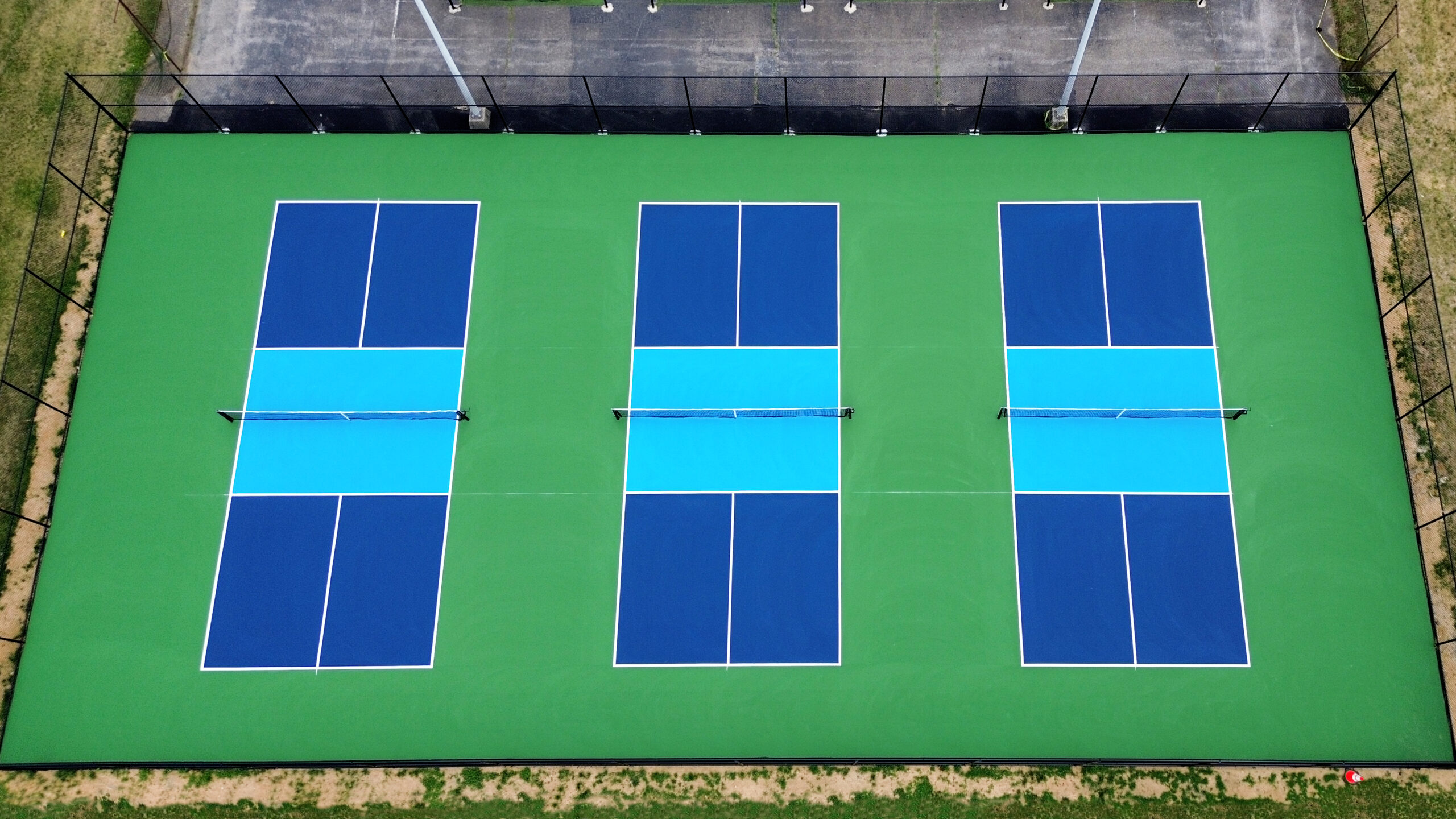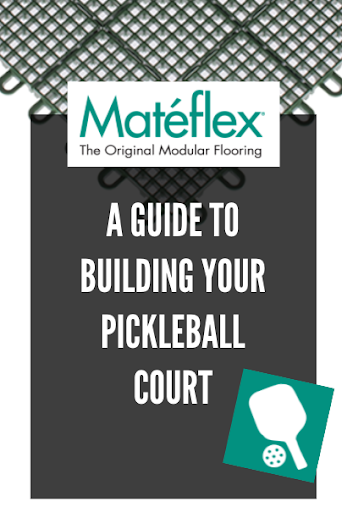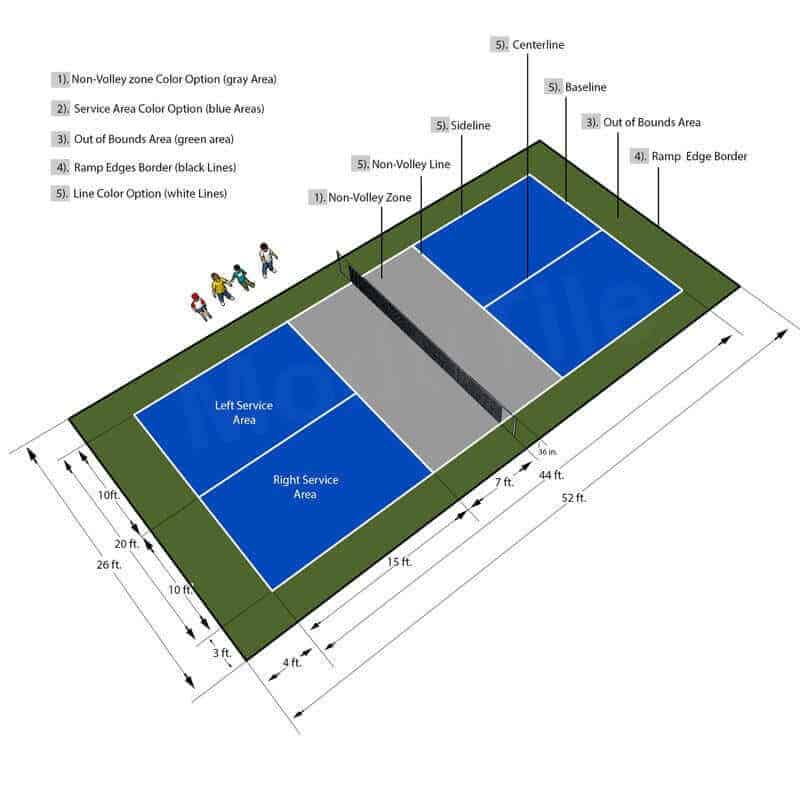Sustainable Practices in Pickleball Court Construction You Should Know
As the appeal of pickleball continues to climb, so too does the need for sustainable techniques in court construction. This technique not just addresses ecological concerns but additionally improves the longevity and functionality of the courts. From selecting green materials to carrying out efficient drain and energy-saving lighting remedies, there are countless methods to think about. The effect of these techniques extends far beyond the court itself. Recognizing how each element adds to an extra sustainable future welcomes better expedition into the elaborate equilibrium in between recreational growth and ecological stewardship.
Selecting Eco-Friendly Products
Choosing green products is an important action in the building and construction of lasting pickleball courts. The selection of lasting materials not only reduces environmental effect yet additionally improves the long life and efficiency of the court. Secret products include recycled rubber for the surface, which uses outstanding durability and shock absorption while drawing away waste from landfills.
Additionally, using in your area sourced products lowers transportation emissions and sustains local economic climates. Pickleball court construction. Using native hardwoods for secure fencing and seating can offer a lasting aesthetic while ensuring resilience versus the elements.
Integrating permeable materials for court structures can even more add to sustainability by allowing for all-natural water drain and lowering overflow. These choices not only secure regional communities but also promote much healthier play atmospheres.
Efficient Water Drainage Solutions
While the selection of green materials is vital, carrying out efficient water drainage options is equally crucial for preserving sustainable pickleball courts. Correct water drainage not only shields the court surface area from water damage but likewise minimizes erosion and overflow, advertising ecological stability.
Reliable drain systems can include absorptive paving, which enables water to penetrate the ground instead than pooling on the surface. This decreases the possibility of standing water, which can cause mold and mildew and other maintenance problems. Furthermore, including purposefully positioned water drainage networks and swales can direct excess water far from the court area, guaranteeing a completely dry playing surface and avoiding dirt erosion.
Utilizing indigenous plants in the landscape design around the courts can further improve drain by soaking up excess water and lowering drainage. These plants require much less irrigation and promote biodiversity, aligning with lasting practices.
Furthermore, it is important to on a regular basis maintain the drainage system to guarantee its long-term efficiency. This includes clearing up debris and monitoring for obstructions. By prioritizing efficient water drainage remedies, pickleball court manufacturers can considerably contribute to the sustainability and durability of the facility, eventually profiting both players and the environment.
Energy-Efficient Lights Options
As the need for pickleball proceeds to expand, incorporating energy-efficient lights options right into court layout has actually come to be increasingly essential for sustainability. Traditional lighting systems often eat blog extreme power, adding to higher functional expenses and environmental influence. Adopting modern-day, energy-efficient innovations is crucial for both brand-new constructions and remodellings.
LED (Light Emitting Diode) illumination sticks out as a leading selection because of its longevity and energy cost savings (Pickleball court construction). Contrasted to traditional lights, LEDs utilize approximately 75% much less energy and can last approximately 25 times longer, substantially minimizing upkeep expenses. The directional nature of LED lights minimizes light contamination, guaranteeing that lighting is focused on the court rather than bordering locations.

Sustainable Surface Area Alternatives
Exploring lasting surface area choices for pickleball courts has obtained traction amongst players and builders alike. The emphasis on eco-friendly materials not just lines up with the growing ecological understanding however additionally boosts the performance and resilience of the courts.
One preferred alternative is using recycled rubber, which can be sourced from used tires. This material gives outstanding shock absorption, reducing the risk of injuries for players while promoting sustainability. Additionally, modular floor tiles made from recycled plastics provide another practical alternative. These ceramic tiles are simple to install and replace, and their flexibility enables different court arrangements.
All-natural yard courts are also becoming a lasting selection, advertising biodiversity and reducing the warm island impact. They call for routine upkeep and water, which may not straighten with all sustainability goals.

Water Preservation Methods

Another effective technique entails the setup of rain harvesting systems. These systems collect and keep rainwater for use in maintaining court surface areas and landscape design. This strategy not just preserves safe and clean water yet additionally reduces dependence click here to find out more on metropolitan resources.
Furthermore, using drought-resistant landscape design around the courts is crucial. Indigenous plants need much less water and are much better adjusted to neighborhood climate problems, thus decreasing total water intake. Additionally, using effective irrigation systems, such as drip irrigation, ensures that water is provided directly to plant origins, lessening evaporation and waste.
Final Thought
Integrating lasting practices in pickleball court building considerably adds to ecological conservation and resource effectiveness. By focusing on these methods, the building and construction of pickleball courts can align with broader environmental objectives while advertising long life and functionality within communities.
As the popularity of pickleball continues to increase, so as well does the requirement for lasting methods in court building and construction.Picking environmentally friendly materials is an essential step in the construction of sustainable pickleball courts. By prioritizing energy-efficient lighting options, pickleball court manufacturers can add to a much more lasting future while fulfilling the requirements of stakeholders and players alike.Incorporating sustainable surface area options not only enhances the efficiency of pickleball courts however also leads the method for executing effective water preservation methods.Incorporating lasting practices in pickleball court building and construction considerably contributes to ecological preservation and source efficiency.